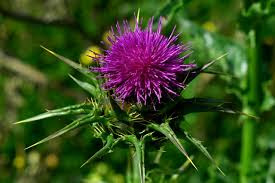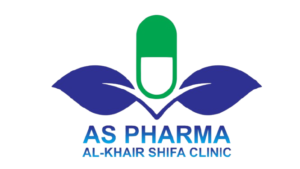Silybum Marianum(Milk Thistle) = An Overview
Introduction
Milk thistle, scientifically known as Silybum Marianum, is a plant native to Europe and has been widely naturalized in other parts of the world. It is renowned for its medicinal properties, particularly in supporting liver health. The plant gets its name from the milky sap that is released when its leaves are crushed.Historically, milk thistle has been used for centuries as a natural remedy for various liver ailments. The active ingredient in milk thistle is believed to be a flavonoid complex called silymarin, which is composed of several flavonolignans including silybin, silychristin, and silydianin. Silymarin is thought to have antioxidant, anti-inflammatory, and liver-protective effects. In addition to its traditional use for liver disorders, milk thistle has also been studied for its potential benefits in other areas such as diabetes, cholesterol levels, and as an antioxidant. It is available in various forms including capsules, extracts, and teas, and is generally well-tolerated when used appropriately. As with any herbal remedy, it is advisable to consult with a healthcare provider before starting to use milk thistle, especially if you have pre-existing medical conditions or are taking other medications, to ensure safety and efficacy.

Botanical Name:
Silybum Marianum, Silymarin
Family:
Asteraceae
English Name:
Milk Thistle
Urdu Name:
Ount Kattara
Part used:
leave, Roots, Seeds.
Temparament:
Hot + Dry
Order:
3rd
Geographical Source:
Pakistan, India, Europe, Asia, Northern Africa.
Organoleptic Evaluation:
Taste: It has unique, bitter taste.
Smell: Earthy and herbal smell.
Appearance: brownish or yellowish achene, wrapped in a light brown.
Texture: Dry and hard.
Pharmacological Actions / Functions:
Hepatic Protection, Anti-inflammatory, Antiviral Activities, Atniamnesia Effects, Cardio Protection, Indigestion, Obsessive Compulsive Disorder, Sepsis & Burn Prevents, Antioxidant Activity, Antifibrotic, Increase Milk Production.
Specific Action:
Liver Disorders (Protect the liver From toxins).
Chemical Constituent:
Silydianin
Isosilybin
Silychristin
Silybin
Isosilychristin
Taxifolin
Mode of action:
1-Antihepatotoxic activity:
Milk thistle (silymarin) prevents toxic liver damage by competitively binding to hepatocyte receptors, thereby preventing the entry of toxins into liver. Milk thistle increases the GST( glutathione S- transferase) activity, which helps detoxify harmful substances. It is most commonly used to treat liver disorders caused by alcohol, chemicals, Amanita mushroom poisoning and chemotherapy.
2-Stimulation of prolactin secretion and milk production:
Milk thistle ( Silymarin &Silybin)may stimulate the release of prolactin, a hormone essential for milk production and Silymarin may increase milk production by stimulating milk producing cells ( alveoli) in the breast tissue . From Silymarin intake , glycogen synthase is involved in synthesis of glycogen which is converted to glucose and used for milk production and it stimulates the release of prolactin.
Medicinal Uses:
Milk thistle (Silybum marianum) has been utilized for various medicinal purposes due to its active component, silymarin. Here are some of its commonly recognized medicinal uses:
1. Liver Health: Milk thistle is most renowned for its hepatoprotective properties. Silymarin, the main active ingredient, has antioxidant and anti-inflammatory effects that help protect liver cells from damage caused by toxins, alcohol, medications, and infections like hepatitis.
2. Liver Detoxification: It is believed to support liver detoxification processes by enhancing enzyme activity involved in detoxification pathways.
3. Liver Regeneration: Silymarin may promote the regeneration of liver cells and stimulate protein synthesis, aiding in the repair of damaged liver tissue.
4. Treatment of Liver Disorders: Milk thistle is used to support the treatment of various liver disorders, including fatty liver disease, cirrhosis, and chronic hepatitis.
5. Antioxidant Properties: Silymarin acts as a potent antioxidant, scavenging free radicals that can damage cells and contribute to chronic diseases.
6. Anti-inflammatory Effects: It has mild anti-inflammatory effects that may benefit conditions involving inflammation, such as inflammatory bowel disease.
7. Skin Health: Some studies suggest that milk thistle extracts applied topically or ingested orally may improve certain skin conditions, including acne and psoriasis, due to its antioxidant and anti-inflammatory properties.
8. Diabetes Management: Preliminary research indicates that milk thistle may help improve insulin resistance and blood sugar control in people with type 2 diabetes.
9. Cholesterol Levels: There is some evidence that milk thistle extracts may help lower cholesterol levels, particularly LDL (“bad”) cholesterol, which could benefit cardiovascular health.
10. Cancer Prevention: While more research is needed, some studies suggest that silymarin may have anticancer properties, potentially inhibiting the growth of certain types of cancer cells.
Overall, milk thistle is valued for its potential to support liver health and may offer additional health benefits related to antioxidant activity, inflammation reduction, and possibly even cancer prevention. Always consult with a healthcare provider before using milk thistle or any herbal supplement, especially if you have existing medical conditions or are taking medications.
Compound Preparations:
Milk Thistle Liver Complex Capsule, Lectamor, Safoof Hazam.
Dosage:
3 to 5 gram.
Corrigents:
Sherbat Aura ( Sherbat Angoor)
Corrigents:
Majun Anjdan
Side Effects:
Milk Thistle use high dose can damage brain and kidney.
Prescription:
1- For Stomach and Liver:
(Indigestion, Support liver function)
Silybum marianum (Ount Kattara) 20g
Anethum Graveolens (Soya) 20g
Ammonium Chloride (Noshadar Thikri 20g
Trachyspermum Ammi (Ajwain) 20g
Black Salt (Kala Namak) 10g
Rheum Rhabarbarum (revand Khatai) 20g
Mix all ingredients and make a powder.
Usage: 1/2 teaspoon twice a day after meal with water.
2-Increase Milk Production:
Silybum marianum (Ount Kattara) 15g
Fennel (Saunf) 10g
Cuminum cyminum (Zera Safaid) 15g
Make a powder and fill the capsule. Or Extract Formulation.
Usage:
1 Capsule after meal with water (BD).
Conclusion:
Silybum marianum (SM) has garnered significant attention for its remarkable benefits. Pharmacological studies on flavonolignans have been conducted both in vitro and in animal models and human trials. While several pharmacological mechanisms underlying its biological activities have been elucidated, a comprehensive understanding of SM’s pharmacological mechanisms is still needed. Silymarins, identified as the active compounds responsible for anti-diabetic, anti-amnesia, and hepatic-protective activities, have been selected as chemical markers to assess the quality of SM and its products based on phytochemical and pharmacological research. However, there remains a notable lack of pharmacokinetic studies on the main components, particularly the bioactive ones, necessitating robust evidence for further clinical applications to evaluate the therapeutic potential of SM and its pharmaceutical products, especially in cardio protection activities.
